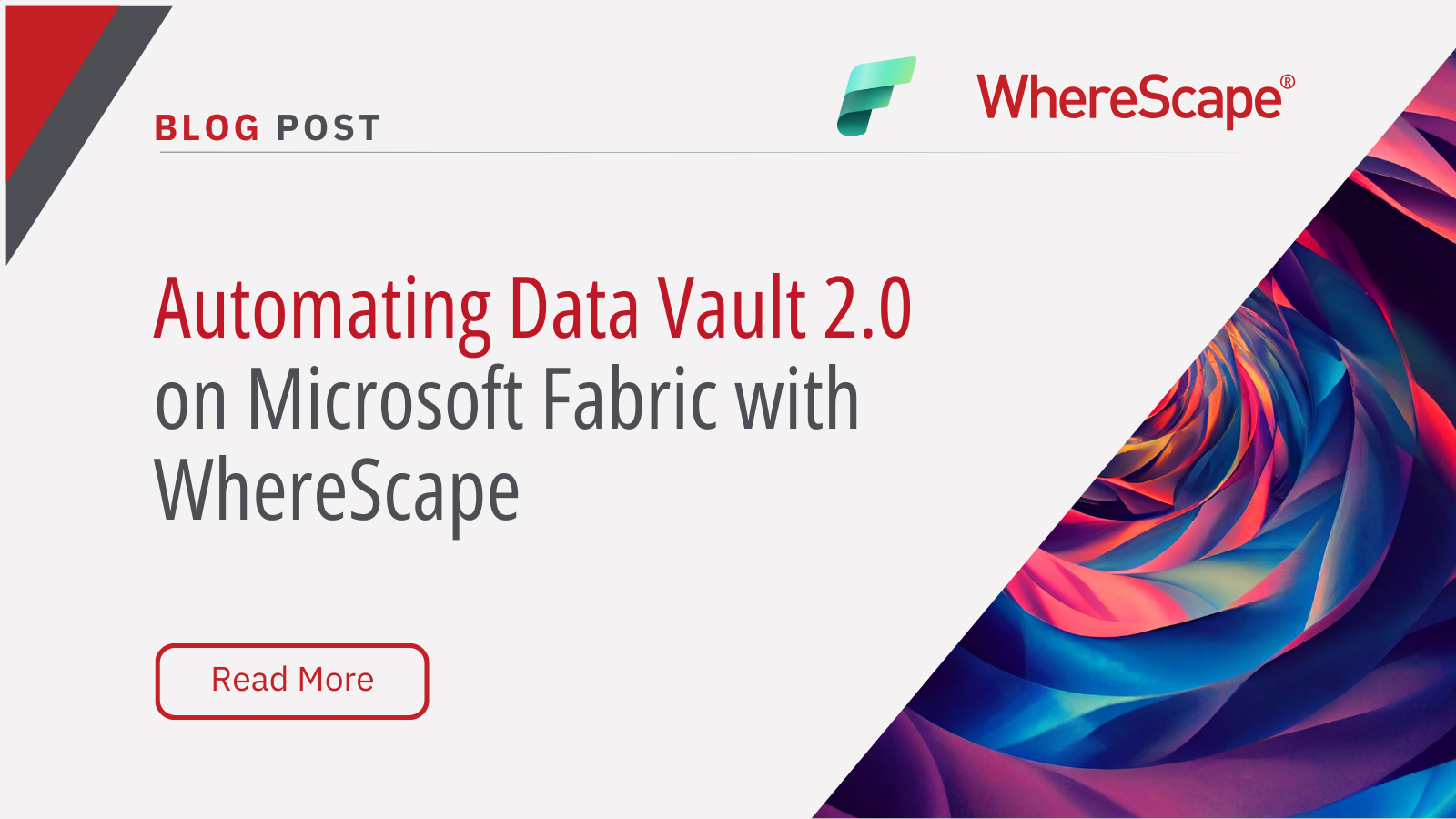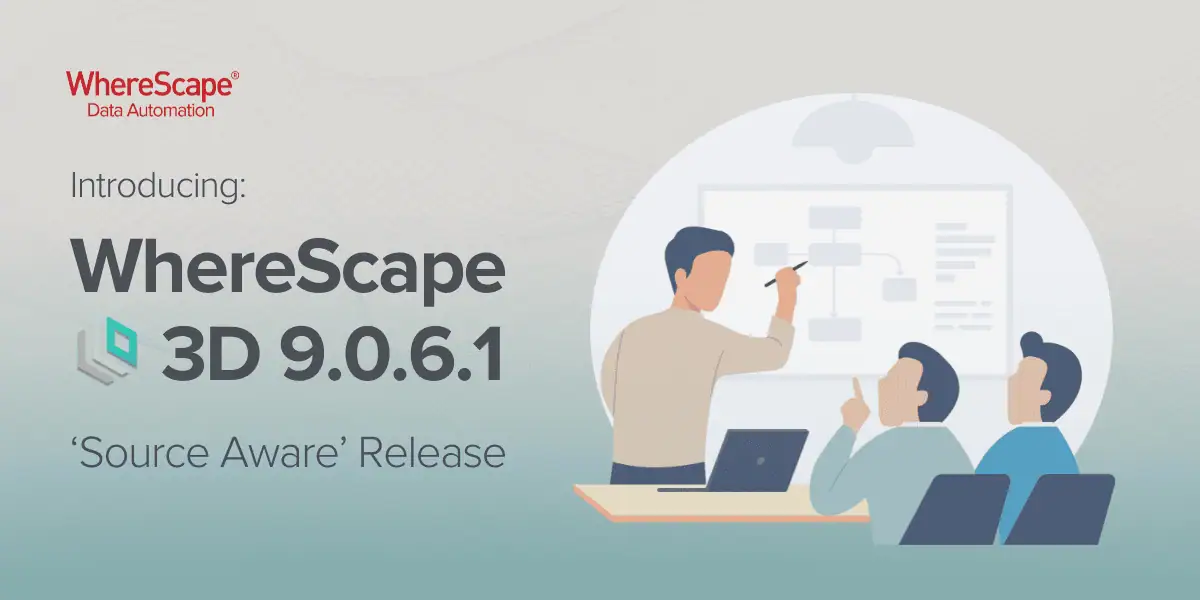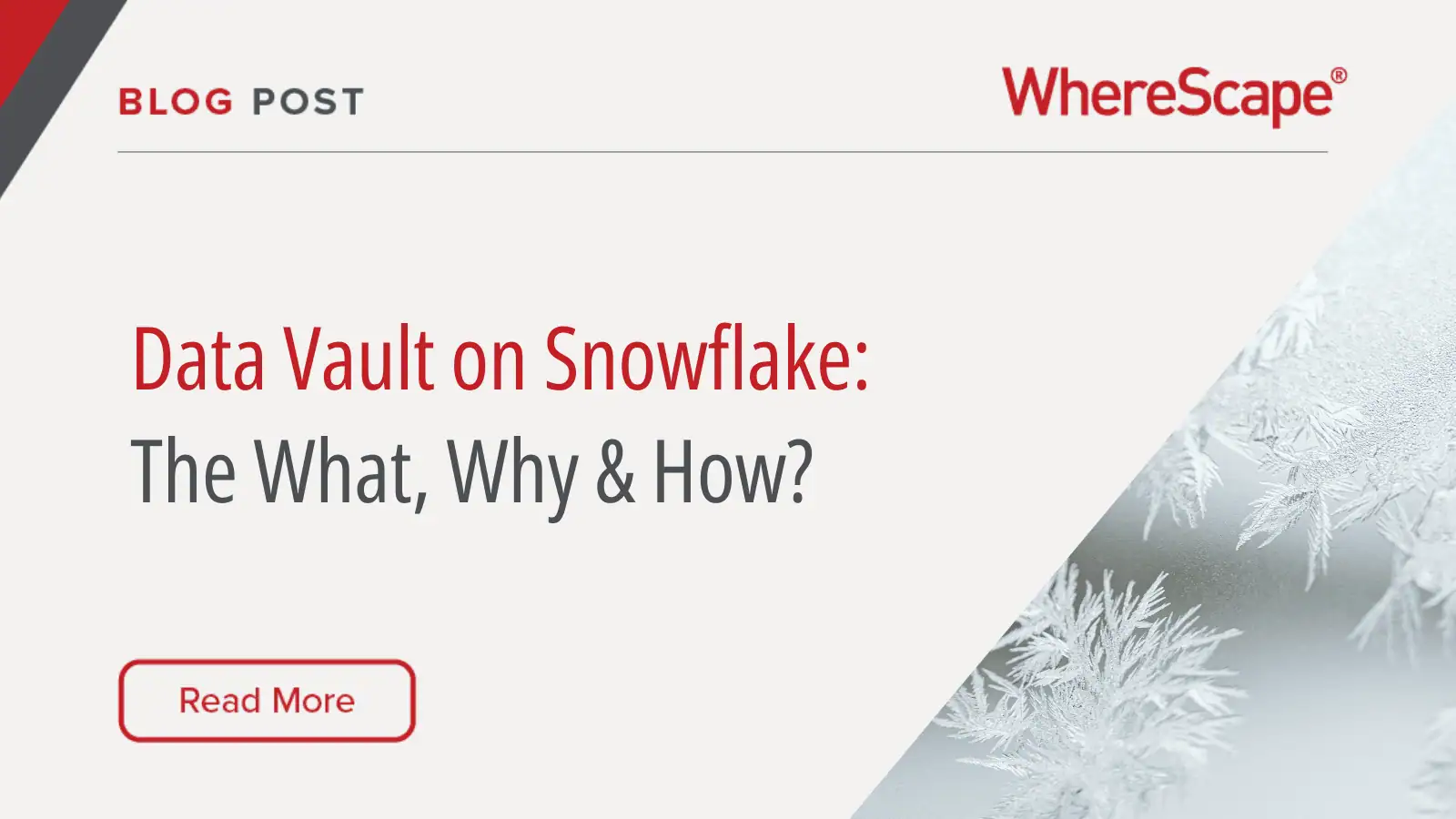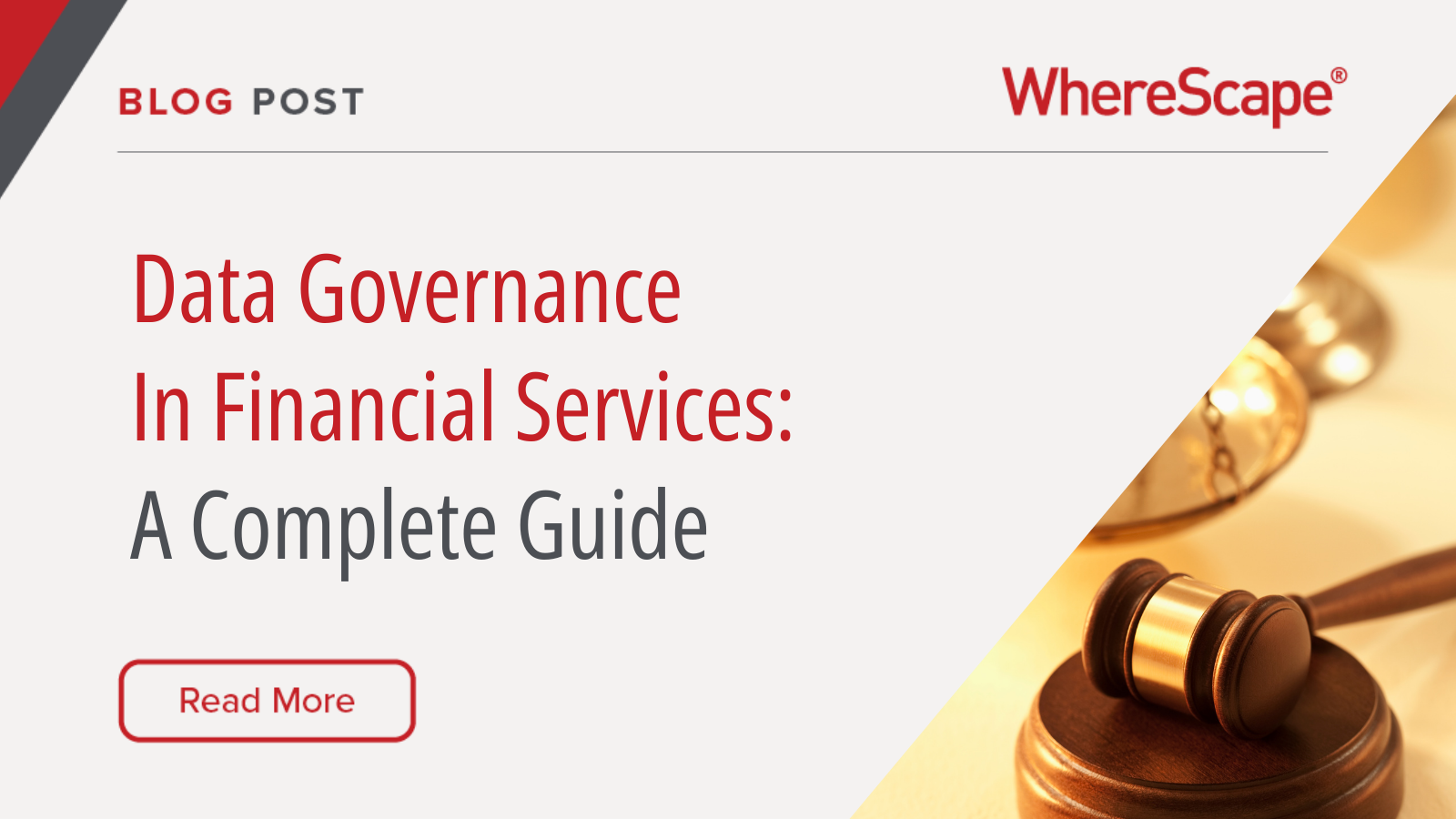Enterprises choosing Microsoft Fabric want scale, governance, and agility. Data Vault 2.0 (DV2) delivers those outcomes at the modeling level:
- Agility: add sources fast, without refactoring the core model.
- Auditability: every change is tracked; nothing is thrown away.
- Decomposition: business entities (Hubs), relationships (Links) and descriptive history (Satellites) cleanly separate concerns.
Fabric is a natural home for DV2 because it’s lake-centric (OneLake), warehouse-ready and governed (Purview). But hand-building DV2—hash keys, PIT/Bridge tables, CDC patterns, orchestrations—can become a project within the project. That’s where WhereScape’s metadata-driven automation changes the economics.
The manual DV2 pitfalls (and their costs)
- Hash keys & change detection: Correctly implementing hash key strategies and CDC quickly turns into thousands of lines of code and delicate edge cases.
- Pattern sprawl: PIT/Bridge tables, SCD types, end-dating, multi-active satellites—each requires boilerplate you shouldn’t hand-roll.
- Orchestration: Ensuring Bronze→Silver→DV2→Star runs reliably and in order, with retries and alerts, is non-trivial at scale.
- Governance & documentation: If lineage and documentation lag behind the build, auditability and trust suffer.
Result: long timelines, fragile code, and inconsistent governance. Even with Fabric’s unified platform, manual DV2 slows time-to-value.
WhereScape’s DV2 accelerator for Fabric
WhereScape brings 25 years of Microsoft expertise and 16 years of DV2 experience to Fabric, packaging best practices into reusable templates and code generation that deploy cleanly into OneLake + Fabric Warehouse and integrate with Power BI and Purview.
1) Model once, generate many times (Hubs, Links, Satellites)
- Hub templates: define business keys and attributes; WhereScape generates tables, hash keys, metadata columns (load date, record source) and load logic.
- Link templates: point-and-click relationship mapping across hubs; automated key resolution and hashing.
- Satellite templates: multi-satellite patterns, end-dating, change detection and historization generated from metadata, not hand-coded.
Outcome: the hard parts of DV2 become configuration choices, not code marathons.
2) CDC, PIT & Bridge without the pain
- CDC (log-based or timestamp-based) configured in metadata; WhereScape emits Fabric-optimized SQL/ELT and orchestrates incremental loads.
- PIT tables: generated to simplify point-in-time queries without torturing your BI layer.
- Bridge tables: optional acceleration for common user journeys (e.g., many-to-many resolution for analysis).
Outcome: consistent performance patterns that scale as data volumes grow.
3) Medallion alignment in Fabric
Your DV2 sits on top of Medallion:
- Bronze: raw landings in OneLake (Delta).
- Silver: standardized/cleansed structures.
- Gold (DV2 & Stars): DV2 core + dimensional marts for consumption.
WhereScape orchestrates the Bronze→ Silver→ DV2→ Star flow, honoring dependencies and surfacing operational status/alerts.
4) Automatic governance & lineage via Purview
- Harvest technical + business metadata from Purview into WhereScape 3D to accelerate reverse-engineering and align naming/definitions.
- Export lineage & documentation back to Purview as deployments occur—so your end-to-end map (source→ pipeline→ warehouse→ Power BI) stays current.
- Audit trail: model changes, deployments, and metadata updates are captured for compliance.
5) Ready-for-Power BI, including Direct Lake
- Dimensional marts generated from DV2 (e.g. Sales Vault → conformed stars).
- Semantic model alignment: clean fact/dimension output reduces Power Query/DAX gymnastics.
- Direct Lake friendliness: Delta in OneLake + Fabric Warehouse means fresh, fast visuals without brittle imports.
A pragmatic delivery blueprint
Week 0–2: Foundation & modeling
- Connect sources; scan metadata; import business glossary from Purview.
- Identify core Hubs (Customer, Product, Order) and Links (Customer-Order, Order-Product).
- Configure CDC approach and naming standards in WhereScape.
Week 3–4: DV2 core
- Generate Hubs/Links/Satellites; implement PIT/Bridge for the most queried flows.
- Stand up initial Gold marts (e.g. Sales, Customer 360) and publish to Warehouse.
Week 5–6: Power BI & governance
- Attach or generate initial semantic models; wire Direct Lake where appropriate.
- Validate end-to-end lineage in Purview; finalize policy labels and data masking where needed.
Result: a governed DV2 and star layer live in ~6 weeks, not endless months.
Performance notes (Fabric realities)
- File/Partition strategy: Let WhereScape set sane defaults for partitioning and clustering on Warehouse tables based on volumes and query shapes.
- Small-table optimizations: Not every satellite benefits from heavy partitioning; WhereScape templates account for this.
- Mixed modes: Use Direct Lake for hot, append-heavy facts; fallback to Import where complex calculations or row-level security patterns demand it.
Common anti-patterns to avoid
- “DV2 everywhere”: Use DV2 where agility/history are essential; go directly to Kimball stars for simple, static domains – WhereScape supports both.
- Custom hash functions: Stick with standardized hashing from templates for cross-domain consistency.
- Manual lineage: If it’s not automated, it will drift. Keep lineage in-lockstep with code generation and deployment.
Business outcomes to expect
- 95% less manual coding on DV2 boilerplate.
- Weeks not months to first governed data products.
- Durable trust via live lineage, auditability, and consistent documentation.
- Future-proofing as new sources and domains are added with minimal rework.
Takeaway: DV2 on Fabric is powerful. DV2 automated by WhereScape is practical, fast, and governable.
Ready to see DV2 patterns generated for your domain? Book a live demo and we’ll build a hub-link-satellite flow on Fabric with your sample data.
About the Author
Patrick O’Halloran is a Senior Solutions Architect at WhereScape with over two decades of experience in data warehousing and analytics. He works with global organizations to implement automated data infrastructure using WhereScape RED and 3D, helping teams scale their data operations efficiently and reliably.




